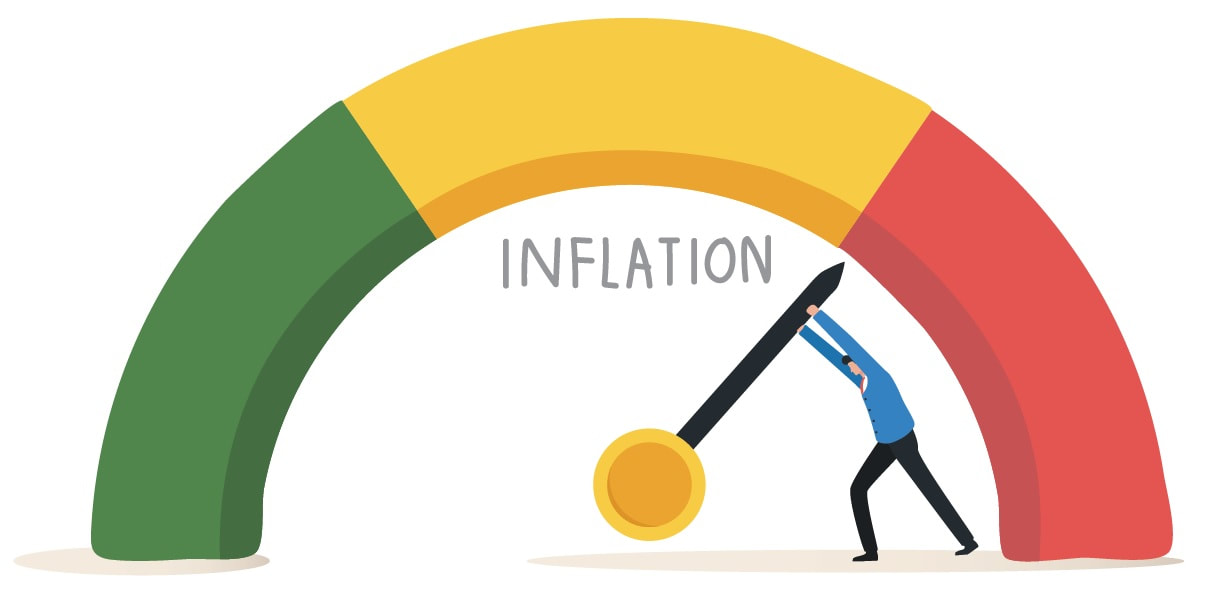The war in Ukraine has added greatly to inflationary pressures this year, with further very sharp increases in energy and other commodity prices. CPI rates reached 8.5% in the US and 8.1% in the Eurozone in May and hit double-digit levels in some economies. The Bank of England is forecasting that inflation in the UK will rise above 11% in the final quarter of this year. Growth, though, is clearly weakening, making central banks task more difficult as they will want to try and avoid pushing their economies into recession as they tighten policy. The US Federal Reserve has been the most vocal of the main central banks in delivering a clear message that a significant tightening of policy is on the cards. It has increased rates by 150 Basis Points (bps) since March, including a 75bps hike in June, the first such hike in nearly thirty years. This has brought the funds rate up to a 1.5-1.75% range.
Further significant rate hikes are in the pipeline for the second half of 2022, with the Fed’s own projections indicating that it sees rates getting to a 3.25-3.5% range by end year and peaking at around 3.75% in 2023. The markets are in broad agreement and see the funds rate rising to 3.5% by end 2022 and 3.75% in March. Notably, all 18 members of the Fed’s policy committee expect rates to go above 3% by end year, so it seems very likely to deliver on its policy tightening intentions for the remainder of 2022. The Bank of England wrapped up its QE bond purchase programme in December. It has hiked the Bank rate on five occasions since then, taking it from 0.1% up to 1.25% by June. Further rate increases are expected over the rest of 2022, with the BoE indicating that it would act forcefully if necessary, should inflationary pressures prove persistent. Indeed, in June, three of the nine members of its Monetary Policy Committee voted for a 50bps hike instead of 25bps for the second meeting running. Markets are now pricing in that UK rates will be raised to 3% by year end and 3.4% in March 2023. Growth in the UK economy, though, has already slowed sharply as a result of fiscal and monetary tightening and higher energy costs. The BoE sees the economy contracting by 0.25% in 2023 and growing by just 0.25% in 2024, with inflation falling well below target in 2025. Thus, markets may be pricing in too much in terms of UK rate hikes given this very weak outlook for economic activity. Rates may top out in a 2.0-2.5% range around the turn of the year, especially if the MPC sticks with raising rates in 25bps steps. The ECB is set to end QE at mid-year and begin hiking rates thereafter. It has indicated that rates will be increased by 25bps in July and possibly by a larger amount in September. Beyond this, the ECB anticipates that a gradual but sustained path of rate tightening will be appropriate. Markets now believe that the ECB will hike rates by 175bps over the second half of the year, taking the key deposit rate up from -0.5% to 1.25%. They see a further 100bps of rate increases in 2023. We expect much weaker growth than the 2% rise in GDP projected by the ECB for 2023. Thus, rates may not be hiked as much as anticipated next year if inflation is on a clear downward path towards 2% by then. Nonetheless, we are on the cusp of a major change in monetary policy in the euro area. The negative interest rate regime that has been in place since 2014 is coming to an end, with a normalisation of monetary policy now imminent. For many borrowers, it will be the first time that they have faced a rising interest rate environment. There were two short-lived rate hikes in 2011 that were quickly reversed. One has to go back to the period 2005-2007 for the last period of significant and sustained increases in interest rates, when they were hiked by 225bps in total by the ECB. It may take some time to come to terms with a return to this kind of environment after a 15 year hiatus. Oliver Mangan Chief Economist AIB
0 Comments
Your comment will be posted after it is approved.
Leave a Reply. |
Archives
June 2023
Categories
All
|
-

Business to Business
Providing Step by Step Guidance
Get in touch for your free consulation today
Contact Us -

-

Over 30 Years Experience
Insight into all aspects and types of business
Get in touch for your free consulation today
Contact Us
We create custom business to business strategies. |
SITE MAP |
CONTACT DETAILS
|
|
©
2024 Ryan & Crowley Chartered Accountants


 RSS Feed
RSS Feed

